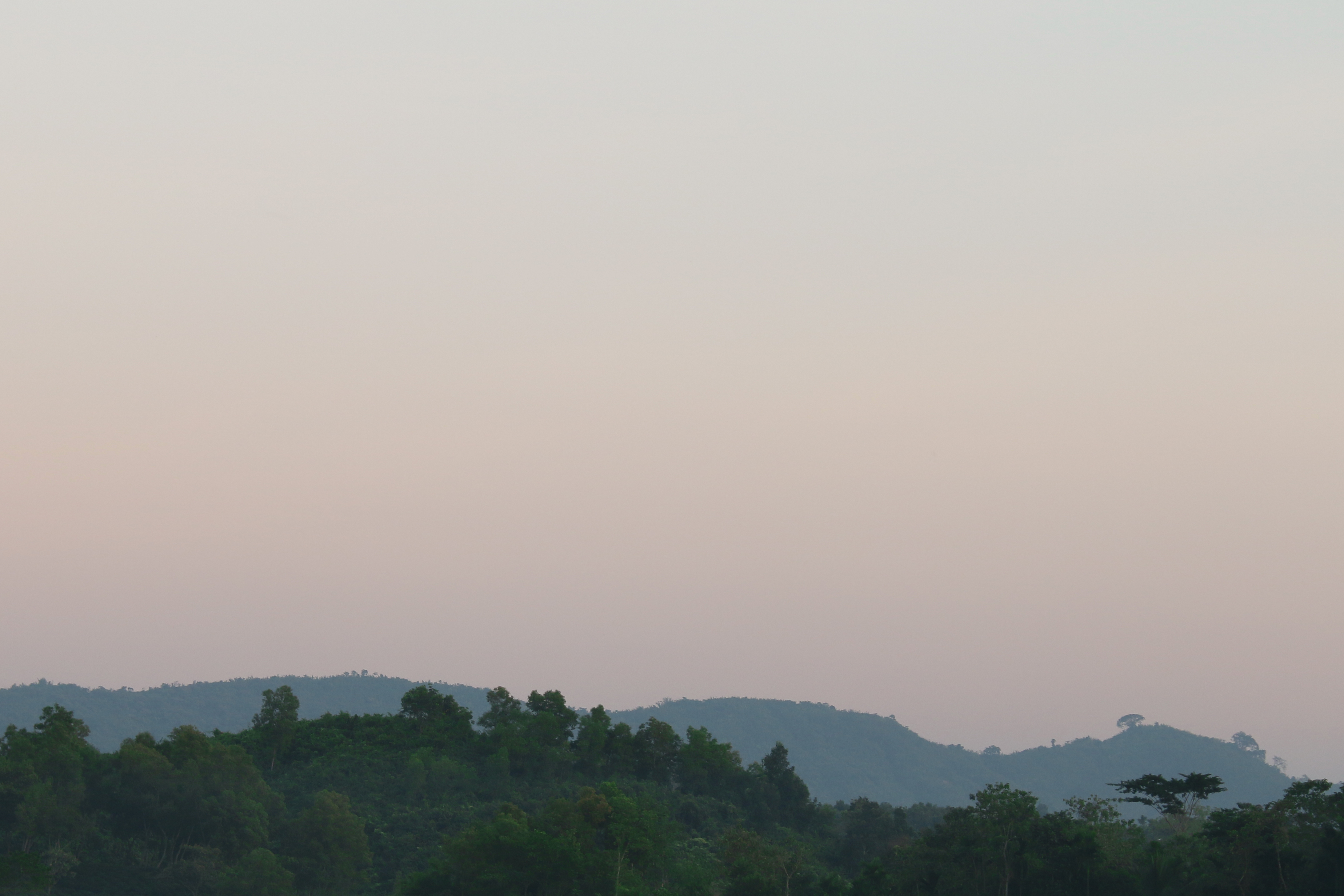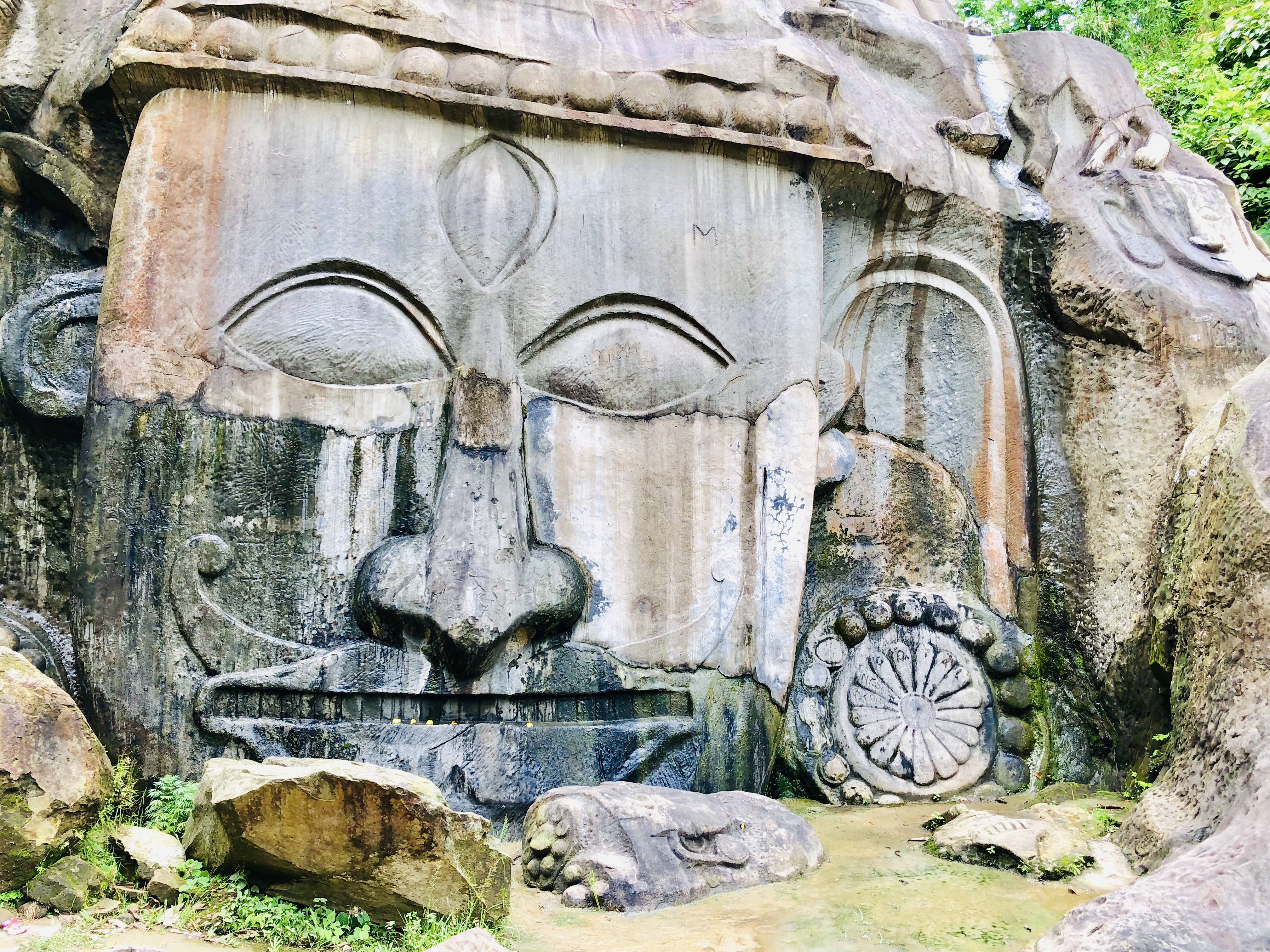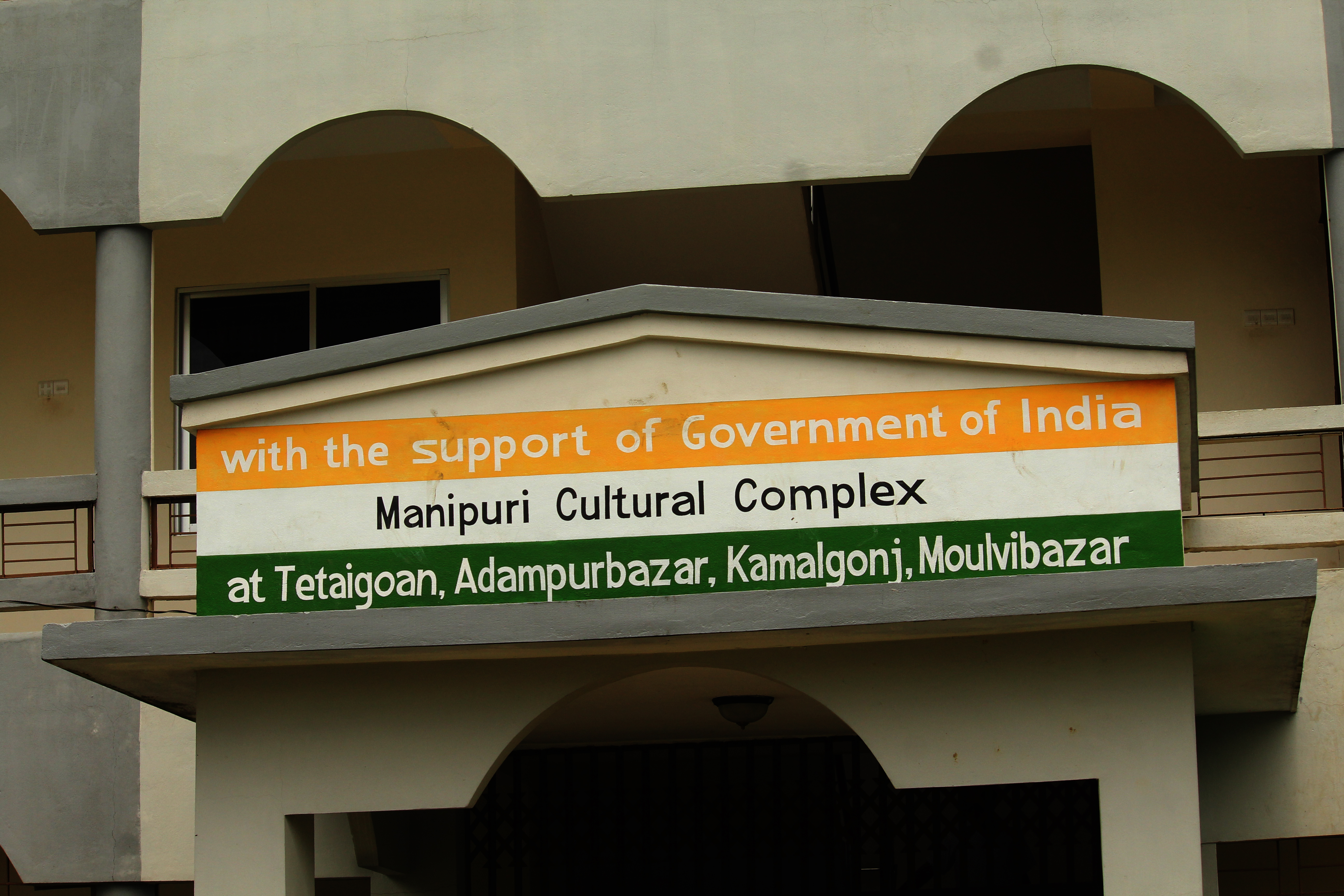|
Kulaura Upazila
Kulaura (), is the largest upazila (sub-district) of Moulvibazar District in north-eastern Bangladesh. The total area of this upazila is 545 km2. Hakaluki Haor, the largest marsh wetland in Sylhet Division and one of the largest in Bangladesh is partially located in Kulaura. Economy and tourism Kulaura is home to many tourist attractions and natural geography. It contains many hills, tea gardens and the largest haor in Asia; the Hakaluki HaorKadipur Shib Bari Templeis the largest Hindus, Hindu temple in Sylhet situated at Kulaura. Hindu goddess Durga's sculpture o1000 handsis inside the temple. There is also a International Society for Krishna Consciousness, ISKCON temple in Rangirkul, Kulaura known as "Rangirkul Bidyashram" & a CTS temple at Pushainagar. Other sites include the Prithimpassa Nawab Estate, Rabir Bazar Jame Masjid, and the Mazar (mausoleum), mausoleums of Haji Pir in Sharifpur, Shah Hamid Faruqi in Kaukapon and Shah Helimuddin Qurayshi Chowdhury Bazar. Geogr ... [...More Info...] [...Related Items...] OR: [Wikipedia] [Google] [Baidu] |
Upazila
An ''upazila'' ( pronounced: ), formerly called ''thana'', is an administrative division in Bangladesh, functioning as a sub-unit of a district. It can be seen as an analogous to a county or a borough of Western countries. Rural upazilas are further administratively divided into union council areas (union parishads). Bangladesh has 495 upazilas. The upazilas are the second lowest tier of regional administration in Bangladesh. The administrative structure consists of divisions (8), districts (64), upazilas (495) and union parishads (UPs). This system of devolution was introduced by the former military ruler and president of Bangladesh, Lt-Gen Hossain Muhammad Ershad, in an attempt to strengthen local government. Below UPs, villages (''gram'') and ''para'' exist, but these have no administrative power and elected members. The Local Government Ordinance of 1982 was amended a year later, redesignating and upgrading the existing ''thanas'' as ''upazilas''. History Upa ... [...More Info...] [...Related Items...] OR: [Wikipedia] [Google] [Baidu] |
Haor
A () is a wetland ecosystem in the north eastern part of Bangladesh which physically is a bowl or saucer shaped shallow Depression (geology), depression, also known as a backswamp.MK Alam; ''Wave attack in Haor areas of Bangladesh and cement concrete blocks as structural revetment material''; ''Progress in Structural Engineering, Mechanics and Computation: Proceedings'' (ed. Alphose Zingoni); page 325; Taylor & Francis; 2004; ''Bio-ecological Zones of Bangladesh''; International Union for Conservation of Nature and Natural Resources, Bangladesh Country Office; page 31; The World Conservation Union (IUCN); 2002; Bangladesh & Desertification , Sustainable Development Networking Programme (SDNP), Bangladesh; ''Retrieved: 2007-12-04'' During monsoons r ... [...More Info...] [...Related Items...] OR: [Wikipedia] [Google] [Baidu] |
Assam
Assam (, , ) is a state in Northeast India, northeastern India, south of the eastern Himalayas along the Brahmaputra Valley, Brahmaputra and Barak River valleys. Assam covers an area of . It is the second largest state in Northeast India, northeastern India by area and the largest in terms of population, with more than 31 million inhabitants. The state is bordered by Bhutan and Arunachal Pradesh to the north; Nagaland and Manipur to the east; Meghalaya, Tripura, Mizoram and Bangladesh to the south; and West Bengal to the west via the Siliguri Corridor, a strip of land that connects the state to the rest of India. Assamese language, Assamese and Bodo language, Bodo are two of the official languages for the entire state and Meitei language, Meitei (Manipuri language, Manipuri) is recognised as an additional official language in three districts of Barak Valley and Hojai district. in Hojai district and for the Barak valley region, alongside Bengali language, Bengali, which is also ... [...More Info...] [...Related Items...] OR: [Wikipedia] [Google] [Baidu] |
Tripura
Tripura () is a States and union territories of India, state in northeastern India. The List of states and union territories of India by area, third-smallest state in the country, it covers ; and the seventh-least populous state with a population of 3.67 million. It is bordered by Assam and Mizoram to the east and by Bangladesh to the north, south and west. Tripura is divided into List of districts of Tripura, 8 districts and 23 sub-divisions, where Agartala is the capital and the largest city in the state. Tripura has 19 different tribal communities with a majority Bengalis, Bengali population. Bengali language, Bengali, Indian English, English and Kokborok are the state's official languages. The area of modern Tripura — ruled for several centuries by the Manikya Dynasty — was part of the Tripuri Kingdom (also known as Hill Tippera). It became a princely state under the British Raj during its tenure, and acceded to independent India in 1947. It merged with India in 1949 an ... [...More Info...] [...Related Items...] OR: [Wikipedia] [Google] [Baidu] |
Kamalganj Upazila
Kamalganj () is an upazila (sub-district) of Moulvibazar District in the Division of Sylhet Division, Sylhet, Bangladesh. Etymology There was a local zamindar by the name of Kinkar Nath Ray who appointed a naib by the name of Kamal Narayan in order to develop the land. Kamal established a wikt:گنج, ganj (treasured neighbourhood) named after himself. In 1922, Kamalganj was made a thana and in 1983, an upazila. History Kamalganj was a part of the ancient ''Ita Kingdom'' founded by Raja Bhanu Narayan. The final raja of the Ita Kingdom, Raja Subid Narayan lost a battle in 1610 in which the region became under the rule of Khwaja Usman. However, this rule was short-lived after Mughal General Islam Khan I's attack in 1612. The battle between the Mughal Empire and Khwaja Usman was held in Patanushar, Kamalganj. This led to the death of Afghan leader Khwaja Usman. A peasant rebellion (krishokproja bidraho) against zamindar of Prithimpasa led by Manipuri leader Panchanan Singh, Baiku ... [...More Info...] [...Related Items...] OR: [Wikipedia] [Google] [Baidu] |
Rajnagar Upazila
Rajnagar () is an upazila of the Moulvibazar District in Sylhet Division, Bangladesh. The district has roughly 43,070 houses and an area of approximately 340 km2. There are three well-known rivers which flow across the Upazila border side of Rajnagar: the Kushiara in the North, the Manu across the southern three unions (Kamarchak, Tengrabazar, and Mansurnager), and the Dholai across Kamarchak and the southern border. Etymology The name of the city, Rajnagar is derived from two words, Raj and nagar, meaning "City of the King". It possibly refers to the kings of the ancient Ita kingdom wherein Rajnagar was the capital. History It is suggested that the area was inhabited by Buddhists and Hindus as evidence from inscriptions suggests there was an ancient university in Panchgaon, Rajnagar. The terrain was headquarters of the ancient Ita Kingdom founded by Raja Bhanu Narayan and its capital was in the villages of Bhumiura and Eolatoli.. Copper plates have been found from 930 AD in P ... [...More Info...] [...Related Items...] OR: [Wikipedia] [Google] [Baidu] |
Fenchuganj Upazila
Fenchuganj () is an upazila of Sylhet District in Sylhet Division, Bangladesh. Etymology There are many theories behind the naming of the upazila. Some say that Fenchuganj is named after Penchu (or Fenchui) Shah, a guardian of Shah Malum's dargah, who had a habit of sitting at the ghat of the Kushiyara River during the evening every day. One day, he decided to open up a shop in the ghat, which eventually expanded into Fenchuganj or Fenchu's neighbourhood. History After the Conquest of Gour in 1303, some disciples of Shah Jalal migrated and settled in present-day Fenchuganj where they preached Islam to the local people. Shah Malum and Shah Mohabbat migrated to Mahurapur/Mourapur. In 1907, the Fenchuganj thana was established. Before 1907, it was a part of the Balaganj Thana. During the 1950 East Pakistan riots, the factory of a steamer company was looted and set on fire. Pulin De was murdered near Ilashpur village. under Fenchuganj police station, the houses of Ambika Kabiraj an ... [...More Info...] [...Related Items...] OR: [Wikipedia] [Google] [Baidu] |
Juri Upazila
Juri () is an upazila (sub-district) of Moulvibazar District. It is located 48 km away from District headquarters. History After the Conquest of Sylhet in 1303, many disciples of Shah Jalal migrated to Juri where they preached the religion of Islam to the local people. Shah Gharib Khaki settled in Bhogtera, Jayfarnagar where his mazar remains and likewise for Shah Abdul-Aliyy Nimatra in Fultola Bazaar, Hazrat Irani in Dakshinbhag and Shah Qasimuddin Jibon Jyoti. During the Bangladesh Liberation War of 1971, freedom fighters conducted operations in various tea gardens across modern-day Juri. The Pakistani army reached Juri on 2 December and many culverts and bridges were destroyed whilst fighting them. Battles were fought in the areas of Fultola, Sagornal and Kapnapahar. Jagadhari pond (behind Juri High School) is noted as a mass killing site. Juri was liberated on 4 December. On 26 August 1984, Juri was founded as thana. It became an upazila on 8 January 2005 with eight union ... [...More Info...] [...Related Items...] OR: [Wikipedia] [Google] [Baidu] |
Barlekha Upazila
Barlekha () is an upazila (sub-district) of Moulvibazar District, located in Sylhet Division, Bangladesh. Etymology Barlekha Upazila is named after Barlekha (formerly 'Barlikha') which means Great ''Likha''. ''Likha'' was an area historically under the ''Panchakhanda'' pargana, and an ancient shloka by Mukundaram Siddhanta refers to the area by this name. Likha was later divided into Barlikha (Great Likha) and ''Chhotalikha'' (Little Likha); the latter of which still exists as a village within the upazila. History The Malegarh hillock at Lathu (came to be known later as Shahbajpur), the northern tip of Barlekha Upazila, was shaken up in November 1857 after Indian rebels revolted in Meerut. The soldiers of 34 Native Infantry in Chittagong revolted, looted the armoury and treasury and set army barracks on fire. These rebel soldiers, on their way to reach Manipur, pitched their tents at Malegarh. A force of 160 company soldiers under Major Byng, initially reached Protaphgarh (now i ... [...More Info...] [...Related Items...] OR: [Wikipedia] [Google] [Baidu] |
Mazar (mausoleum)
A ''mazār'' (), also transliterated as mazaar, also known as ''marqad'' () or in the Maghreb as ''ḍarīḥ'' (), is a mausoleum or shrine in some places of the world, typically that of a saint or notable religious leader. Medieval Arabic texts may also use the words ''mašhad'' () or ''Maqam (shrine), maqām'' to denote the same concept. Etymology *''Mazār'', plural ''mazārāt'' (), is related to the word ''Ziyarat, ziyāra'' (, meaning "visitation"). It refers to a place and time of visiting. Arabic in origin, the word has been borrowed by Persian language, Persian, Hindi-Urdu and Bengali language, Bengali. It has also been rendered as ''mazaar'' in English. *''Darīh'', plural ''aḍriḥa'' () or ''ḍarāiḥ'' (), is related to the verb ''ḍaraḥa'' ( meaning "to inter"). It is commonly used in the Maghreb. *''Mašhad'', plural ''mašāhid'' (), is related to the word ''Shahid, šahīd'' (, meaning "martyr"). It refers to the resting place of a martyr who gave th ... [...More Info...] [...Related Items...] OR: [Wikipedia] [Google] [Baidu] |
Prithimpassa
The Prithimpassa family, also known as the Nawabs of Longla, are a Shia royal family from the Prithimpassa Union, Kulaura Upazila, Moulvibazar, Sylhet, Bangladesh. The family was of the erstwhile feudal nobility of East Bengal. They played important roles in the Indian Rebellion of 1857, the Partition of India and Sylhet referendum in 1947, and the Bangladesh Liberation War of 1971. Origin The family was founded by Sakhi Salamat, a Shi'ite Persian nobleman from Khorasan province, Greater Khorasan an area near the Afghanistan-Iran Border which falls in present-day Iran. Salamat had arrived in the Indian subcontinent at the end of the 15th century. After initially residing at the court of the Lodi sultans of Delhi, he later moved to Sylhet, where he was granted land in the Prithimpassa mouza (located in the pargana of Longla) and first married the daughter of Birchandra Narayan, a Hindu prince of the Ita royal family in Rajnagar mouza. History Dev Bhallav, a Brahmin Shiqdar o ... [...More Info...] [...Related Items...] OR: [Wikipedia] [Google] [Baidu] |






